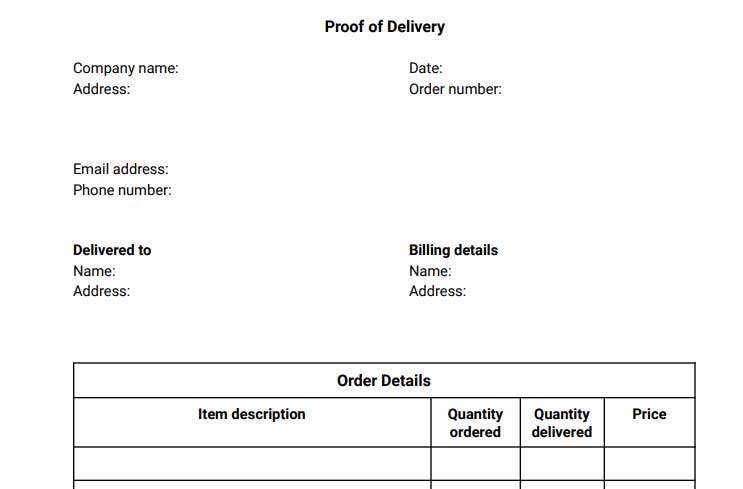In international logistics, POD shipping is a common term, often used as an abbreviation for Proof of Delivery or Port of Destination.
In today’s guide, we will explain the meaning of the former–Proof of Delivery, delving into its types, components, benefits, and more.
What is Proof of Delivery (POD)?
Proof of Delivery is a crucial document or email issued by a freight carrier to the recipient. It serves as a receipt acknowledging that the shipment has reached its final destination.
What are the common types of proof of delivery?
Paper Proof of Delivery
This method involves obtaining a physical signature from the recipient upon delivery. Many businesses in industries where physical signatures are legally required still adhere to this practice.
Electronic Proof of Delivery (ePOD)
Customers should provide an electronic signature, either on a handheld device or electronically through email or SMS upon delivery.
Photo and E-Signature
Delivery drivers can take a photo of the package at the recipient’s address, which is especially useful for contactless delivery, the preferred method during the pandemic.
What is included in a Proof of Delivery form?
A proof of delivery form typically includes essential information such as:
- Nameand contact details of the carrier responsible for the cargo transportation.
- Recipient details: Name, phone number, and address with a delivery pin code for accurate delivery.
- Order number, items, quantity, cargo specifications, such as weight, size, packaging details, indication if containing hazardous materials, and any special delivery instructions.
- Date and time of delivery, tracking number, and consignee signature.
For your convenience, click here to get a Proof of Delivery template.

Who should sign the proof of delivery?
Typically, the recipient signs the POD in shipping. However, if the intended recipient cannot attend the delivery and sign for the shipment, they can authorize someone else to receive the cargo and sign on their behalf.
When to sign this document?
The Proof of Delivery should be signed once the shipment process is complete and the recipient has received the goods.
Moreover, if you are the recipient, it is necessary to:
- Ensure that your shipmentcontains all the items it should.
- Inspect the items for any damage.
It is common for someone to receive a shipment and sign the POD without inspecting the goods, which can be a significant mistake. The POD is more than just a delivery receipt; it is an acknowledgment that the goods arrived in good condition.
What is the difference between BOL and POD?
A Bill of Lading (BOL) is a comprehensive document that covers the entire shipping process, from pick-up to delivery. In contrast, a POD is a more specific document that only verifies the delivery of the goods to the recipient.
Here’s a breakdown of their differences:
Bill of Lading:
- Issued by the carrier to the shipper, confirming receipt of goods for shipment.
- Includes shipment details such as shipper, consignee, carrier, and goods.
- Generated at the point of origin and travels with the goods.
- Used for generating freight bills and as proof of the carriage contract.
Proof of Delivery:
- Certifies that the intended recipient has received a shipment successfully.
- Typically includes the signature of an authorized representative at the delivery location.
- Issued after the goods have been delivered.
- While it doesn’t provide as much detailed information as the BOL, it can serve as evidence of receipt.
BOL vs. POD is easy to clarify when you understand the various stages in transporting goods from the seller to the final consumer.
At Airsupply, we can seamlessly manage and issue these essential shipping documents for your international shipments.
Additionally, our 24/7 tracking system enables you to monitor your cargo in real time, ensuring full visibility and control over your shipment from start to finish.
What are frequently asked questions?
1. Can I get Proof of Delivery to a P.O. box?
Yes, you can. For instance, the USPS service Certified Mail enables the sender to obtain a mailing receipt and verify the shipment delivery online.
2. What to do if you receive a damaged delivery after signing the POD?
- Document the damage:Take photos or videos of the damaged items and notify the carrier immediately.
- File a claim:Provide all the required documentation, including the POD and evidence of the damage, to file a claim.
- Keep records:Keep copies of all communications, including emails and letters, with the carrier regarding the damaged delivery.




